Gender in English GrammarGender determines whether a noun or pronoun is male, female, or neuter. Whereas most nouns in the English language do not have genders, there are some nouns pertaining to individuals and animals that do. 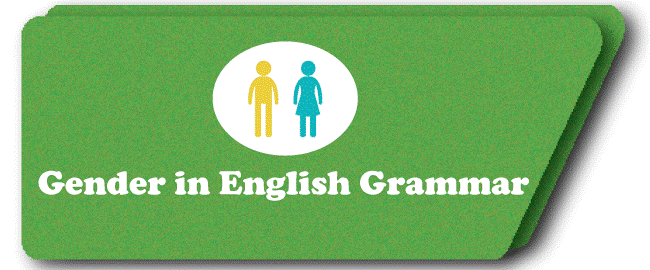
What Is the Definition of Gender in English Grammar?Gender is described as "each of the categories (male, female, and sometimes neutral) into a certain nouns, pronouns, and adjectives are split; the classification of nouns, pronouns, and adjective into these different sexes" by the Oxford Learner's Dictionary. Distinct genders' have different endings." According to Merriam-Webster, gender is a subcategory within a linguistic category (such as noun, pronoun, adjective, or verb) that is partially arbitrary and partially determined by distinguishable characteristics (such as shape, social status, mode of existence, or sex), and influences the choice and agreement of other words or grammatical forms. 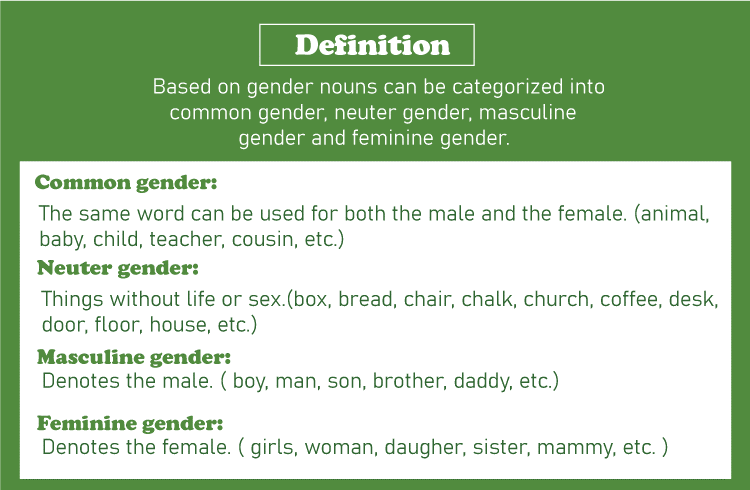
What Exactly Is "Gender" In Language?Gender is used in roughly one-quarter of the world's languages. Gender in languages is merely one means of categorising nouns into categories or groups. A noun is a word in the English language that refers to a person, location, object, idea, action, or characteristic. Nouns, for example, can relate to a person's given name, such as Michael or Lakshmi. It can also allude to a thing or a location. Nouns such as Australia, Dior or London are examples of nouns. Nouns, like Qantas, can be masculine or feminine in several languages. It is crucial to differentiate between grammatical and natural gender. Natural gender is just individuals, animal's, or character's biological sex. Grammatical gender is a classification system for nouns. However, this may not always correspond to the "natural gender" of the person or item being described. Grammatical gender in certain dialects encompasses more than "male" or "female." A "neuter" class exists in some languages. In other languages, animate and inanimate items have separate genders. Examine how these functions in various languages. When it pertains to gender and grammar, English makes our lives a little simpler. Types Of GenderIn English grammar, gender refers to the property of a noun or pronoun that indicates its sex. Unlike other languages like French, gender distinction in English is based on biology or tradition, rather than actual grammatical gender. English recognizes three genders: Masculine, Feminine, and Neuter. Masculine gender refers to male beings such as a boy, man, or bull. Feminine gender refers to female beings such as a girl, woman, or hen. Neuter gender refers to objects with no sex such as a floor, stone, or plant. There is also a common gender category that encompasses nouns that can be either masculine or feminine without specifying a particular gender, such as baby, teacher, or parent. 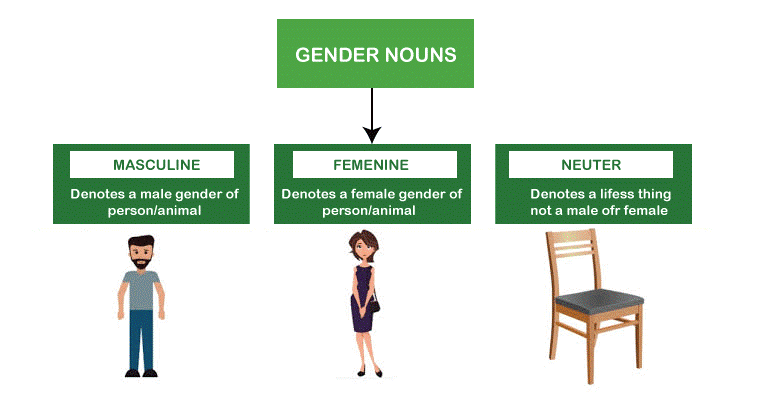
It's worth noting that some inanimate objects are often referred to as though they were feminine, such as ships, cars, trains, or the Catholic Church. This is mainly a historical or poetic usage, while in ordinary prose, especially in science, these objects are treated as neuter, with the exception of ships which still maintain their feminine reference. Celestial objects like the moon and the sun are sometimes referred to as she and he respectively in poetry, but are usually treated as neuter in ordinary prose. The concept of gender in the English language has evolved over time. Historically, the English language only had two genders, masculine and feminine, which were assigned to nouns based on their perceived natural gender. In the Middle Ages, the English language adopted grammatical gender from Latin and other Romance languages, which added neuter gender to the language. This meant that nouns in English could be assigned masculine, feminine, or neuter gender based on grammar, not just their perceived natural gender. In recent decades, there has been a growing recognition of the impact of language and gender on society, and an effort to reduce gender bias in language. This has led to a movement towards gender-neutral language in English, with a focus on avoiding gender bias in language and promoting inclusivity. This has resulted in changes in the way gender is used in the English language, with the introduction of new, gender-neutral words and the modification of traditional, gendered words. The history of gender in the English language is ongoing, and will likely continue to evolve as society and attitudes towards gender continue to change. 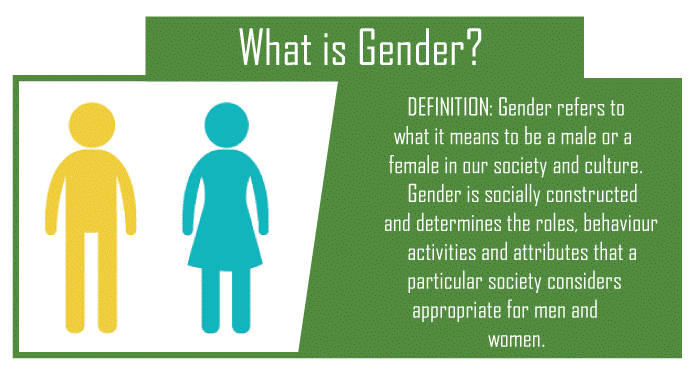
Natural Gender1. Explanation of Natural Gender: Natural gender refers to the gender assigned to living beings based on their biological characteristics, such as male, female, and hermaphrodite. 2. Examples of Natural Gender in English: For example, the nouns "boy," "girl," and "hermaphrodite" are naturally gendered nouns in English. Natural gender is a biological concept and can be observed through physical characteristics or anatomy . Grammatical Gender1. Explanation of Grammatical Gender: Grammatical gender, on the other hand, is a linguistic concept that assigns gender to non-living objects, such as nouns and pronouns. Grammatical gender is not always related to natural gender and can vary in different languages and linguistic systems . 2. Examples of Grammatical Gender in English: In English, grammatical gender is not as prominent as it is in other languages. However, there are some nouns that have been assigned grammatical gender, such as "ship" being considered feminine and "table" being considered masculine. In English, grammatical gender is not necessary for communication, but it can add subtle nuances to language . Rules for Gender AgreementExplanation of Gender Agreement: Gender agreement refers to the relationship between the gender of a noun and the gender of other words in a sentence. This includes the gender of articles, adjectives, and pronouns used to describe or refer to the noun . Rules for Gender Agreement in English 1. Gender agreement in Singular Nouns: In English, the gender of a singular noun is usually indicated by the article that is used before the noun. For example, "the boy" or "the girl. " 2. Gender agreement in Plural Nouns: In English, the gender of plural nouns is not specified. Therefore, the gender of articles, adjectives, and pronouns used with plural nouns is not important . 3. Gender agreement in Pronouns: Pronouns in English have gender, such as "he" and "she." The gender of a pronoun must match the gender of the noun it refers to in a sentence . 4. Gender agreement in Adjectives: Adjectives used to describe a noun must match the gender of the noun. For example, "pretty girl" or "handsome boy. " Gender Neutral LanguageA. Explanation of Gender-Neutral Language: Gender neutral language is language that does not assign a gender to individuals or objects and does not have gender bias . B. Importance of Gender-Neutral Language in English Grammar: The use of gender-neutral language is important to promote equality and inclusivity in communication. Gender neutral language helps to avoid making assumptions about someone's gender identity and reduces the need for gender-based stereotypes . C. Examples of Gender-Neutral Language in English: Examples of gender-neutral language in English include the use of gender-neutral pronouns such as "they" instead of "he" or "she," and the use of gender-neutral titles such as "Mx" instead of "Mr." or "Ms." Gender neutral language can also be achieved by rephrasing sentences to avoid gender-specific nouns or pronouns . In English, natural gender is used to describe the gender of living beings such as animals, humans, and mythical creatures. This gender is assigned based on biological characteristics and physiological traits, such as male, female, and hermaphrodite . Nouns that are associated with living beings, such as "boy," "girl," "man," "woman," and "hermaphrodite," are examples of naturally gendered nouns in English. These nouns are inherently gendered and cannot be changed . It is important to note that natural gender may not always align with a person's gender identity. For instance, a person who identifies as female may be biologically male, and vice versa. It is important to be respectful and mindful of a person's gender identity and to use language that aligns with their self-identification . Why Use Gender-Inclusive Terminology?What's the point of using gender-inclusive language? It is preferable to employ phrases that eliminate bias towards a specific sex or social gender. Terms like "chairman" can be found in the list of gender-inclusive language. This word bears the suffix -man. Women, on the other hand, are similarly capable of occupying very high-level positions. The title chairman signifies the same thing but emphasises the participation of all people, irrespective of their biological gender. So, by not utilising a word ending in "-man" as the norm for specific vocations, we may standardize the idea that anybody, regardless of gender identification, can perform a job. What Role Does Gender Play in Foreign Languages?Words in English are not assigned a gender. Yet how does gender play out in other languages? Boys (il bambino) are male in Italian. Girls, on the other contrary, are female (la bambina). Fork (die Gabel) is female, fork (die Gabel) is masculine, and fork (die Gabel) is masculine. A knife (das Messer) is a neutral object. Lastly, a spoon (der L�ffel) is considered masculine. A young woman (das M�dchen) does not have a gender in German. Of course, German is not the only dialect in which dead objects are classified as "masculine" or "female." It also isn't the only language in which living entities are assigned a grammatical gender that is unconnected to their gender. A girl (cailn) is male in Irish, whereas a stallion (stail) is female. The list goes on and on. The Importance of Considering Gender in GrammarGender in grammar is an important topic as it can affect how people are perceived and addressed. There are three main issues related to gender in grammar that are worth exploring. There are three significant considerations related to gender in language. (Issue 1) Alternative to Using "His/Her "In the past, the accepted practice for referring to unknown individuals was using "he" or "his." However, this is now considered sexist and inaccurate, especially in light of the fact that not everyone being referred to may be male. One solution is to use "he/she" or "his or her," but these can be awkward. A more natural solution is using "they" and "their," which has been a common practice for over six centuries and is now a formally accepted grammar usage. "Them" and "theirs" can also be used as singular, gender-neutral pronouns. When faced with the need to use a pronoun with "anyone," "everyone," or "someone," rewording the sentence can be a good option to avoid pairing the singular noun with a plural pronoun. 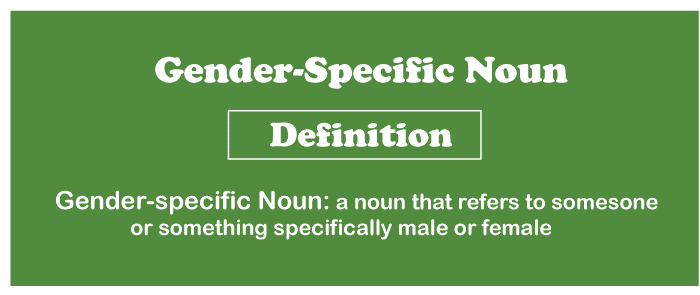
(Issue 2) Selecting the Appropriate Version Of "Blonde/Blond."The noun form "blond" refers to a fair-haired male, while "blonde" refers to a fair-haired female. As adjectives, both "blond" and "blonde" can be used to describe individuals with fair hair, regardless of their gender. (Issue 3) Gender-Neutral Pronouns for Non-Binary IndividualsIt is important to be mindful of individuals who may identify as both male and female, neither male nor female, or as something else entirely. These individuals may request the use of "they" (and their related forms) or simply their name when referring to them, rather than using a gendered pronoun. Other gender-neutral pronoun options have been proposed, such as "ey," "per," "sie," "ve," and "zie," but none has yet gained widespread usage. However, "they" is increasingly being recognized by linguistics specialists as a suitable non-binary pronoun, particularly given its already established use in a similar context (as discussed in "Issue 1"). In conclusion, gender in grammar is an important consideration as it can have an impact on how individuals are perceived and addressed. The use of "singular they" as a gender-neutral pronoun is a formally accepted practice, while the choice between "blond" and "blonde" depends on the gender of the individual being described. Additionally, it is important to be aware of and use gender-neutral pronouns for individuals who do not identify as either male or female. Here are some examples for the three notable issues linked to gender in grammar: (Issue 1) Finding an alternative to "his/her " Original: Each person must understand where he fits in the team. (sexist and inaccurate ) Revised: Each person must understand where he/she fits in the team . Original: Anyone who forgets his passport will be sent home. (sexist and inaccurate ) Revised: Anyone who forgets his or her passport will be sent home . (Issue 2) Choosing the right version of "blonde/blond" Noun: The blond has nice shoes. (refers to a fair-haired male ) Adjective: The blond girl and the blond boy make a nice blond couple. (used for anyone with fair hair ) Noun: The blonde has nice shoes. (refers to a fair-haired female ) Adjective: The blonde girl and the blond boy make a nice blond couple. (used for females with fair hair ) (Issue 3) Using gender-neutral pronouns Original: Sarah always goes to the park with her friends. (assumes gender ) Alternative: Sarah always goes to the park with their friends. (gender-neutral ) Alternative: Sarah always goes to the park with friends. (avoids pronoun altogether ) Note: It's important to always respect an individual's preferred pronoun and use it when referring to them. Some people may prefer to use they/them as a gender-neutral pronoun, while others may have a different preference. It's always best to ask and use the pronoun that makes them feel most comfortable and accurately represents their identity.Important Points About GenderHere are some important points that you must keep in mind while using Gender in English Grammar. When referring to individuals whose gender is undefined, it is recommended to utilize gender-neutral language such as "they," "their," etc. rather than gendered language like "he/she," "his/her." For instance: "Anyone claiming to be medically exempt from this activity due to a medical condition must present a note from their doctor." In terms of adjectives for hair color, "blond" is appropriate for men, while "blonde" is fitting for women. It is also crucial to be mindful of individuals who may not identify as exclusively male or female, and they may prefer the use of gender-neutral language or simply using their name instead of a pronoun. Common Mistakes in Gender Usage in English and How to Avoid ThemEnglish grammar has evolved over time and is becoming increasingly inclusive to address issues of gender bias and non-binary gender representation. However, even with the growing awareness of gender sensitivity, there are still common mistakes in gender usage in English. In this section, we will discuss some of these mistakes and provide tips on how to avoid them. 1. Misusing PronounsOne of the most common mistakes in gender usage in English is the misuse of pronouns. For example, using "he" to refer to someone of unknown gender or using "she" to refer to a person who identifies as non-binary. To avoid this mistake, it's important to use gender-neutral pronouns such as "they" or "them" when referring to someone whose gender is unknown or when referring to a person who identifies as non-binary. 2. Ignoring Gender BiasAnother common mistake is ignoring gender bias in language. Words and phrases that are commonly used to describe women or men in a stereotypical manner, such as "bitchy" to describe a woman who is perceived as being difficult or "man up" to encourage a man to be more assertive, perpetuate gender biases and can be harmful. To avoid this mistake, it's important to use gender-neutral language and to be mindful of the words and phrases we use. 3. Using Gendered Titles IncorrectlyTitles such as "Mr." and "Mrs." are gendered and can be problematic for individuals who identify as non-binary or for individuals who do not conform to traditional gender norms. To avoid this mistake, it's important to use gender-neutral titles such as "Mx." or to simply use first names. 4. Making Assumptions About GenderMaking assumptions about someone's gender based on their appearance, name, or other factors is a common mistake in gender usage in English. To avoid this mistake, it's important to ask individuals how they would like to be referred to and to respect their preferred gender pronoun and title. In conclusion, avoiding common mistakes in gender usage in English requires a conscious effort to be more inclusive and respectful of all gender identities. By using gender-neutral language, avoiding gender biases, and being mindful of the words and phrases we use, we can create a more inclusive and equitable environment for everyone. Determining the Gender of Nouns in EnglishEnglish nouns can be either masculine, feminine, or neutral. However, it can be challenging to determine the gender of a noun as there are no definite rules for it. Here are some guidelines to help you determine the gender of a noun: Gender based on biological sex: In some cases, the gender of a noun can be determined based on the biological sex of the person or animal it refers to. For example, "king" is masculine and "queen" is feminine . Gender based on the ending of the noun: Some nouns in English are typically masculine or feminine based on their endings. For example, nouns ending in -ess are usually feminine, such as "princess" . Gender based on the nature of the object: In some cases, the gender of a noun can be determined based on the nature of the object it refers to. For example, "sun" is usually considered masculine and "moon" is considered feminine . Gender based on cultural traditions: The gender of some nouns in English can also be determined based on cultural traditions and beliefs. For example, "mountain" is often considered masculine in many cultures . 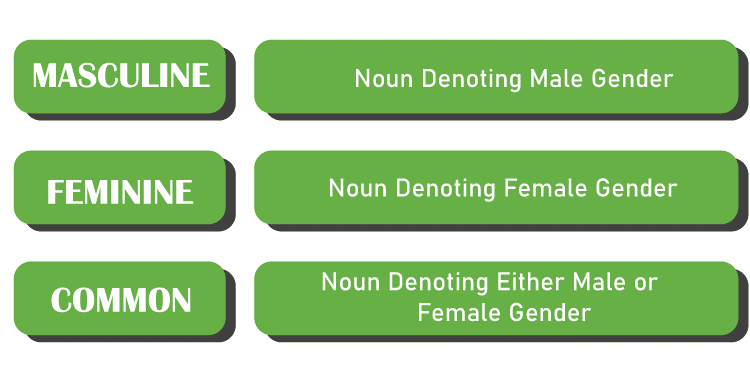
Using Articles and Adjectives with Nouns in English Based on GenderOnce you have determined the gender of a noun, it is important to use the correct articles and adjectives with it. Here are the rules for using articles and adjectives with nouns in English based on gender: Masculine Nouns: Use "the" as the definite article and "a" as the indefinite article with masculine nouns. For example, "the king" and "a king" . Feminine Nouns: Use "the" as the definite article and "a" as the indefinite article with feminine nouns. For example, "the queen" and "a queen" . Neutral Nouns: Use "the" as the definite article and "a" as the indefinite article with neutral nouns. For example, "the computer" and "a computer" . Adjectives with Nouns: Adjectives used with nouns must agree in gender with the nouns they modify. For example, if the noun is masculine, the adjective used with it must also be masculine . Gender Bias in English GrammarEnglish grammar has traditionally been biased in favor of the masculine gender. This is reflected in the way nouns, articles, and adjectives are used. For example, in English, generic terms like "doctor" and "nurse" are assumed to be male and female, respectively. Similarly, terms like "mankind" and "chairman" are assumed to be male-oriented. These examples of gender bias in English grammar can be seen as exclusive and reinforce gender stereotypes Importance of Avoiding Gender Bias in Language and the Impact it Can HaveLanguage has the power to shape our perceptions and understanding of the world. It has a direct impact on our beliefs and attitudes towards gender. This is why avoiding gender bias in language is crucial. By eliminating gender-biased language, we can promote equality and create a more inclusive society. This can lead to greater representation of women and other underrepresented groups in areas such as politics, business, and education. Moreover, avoiding gender bias in language helps to challenge gender stereotypes and promote gender-neutral language. This encourages people to think more critically about gender, and helps to break down the traditional gender binary. By using gender-neutral language, we can create a more inclusive society where everyone feels valued and respected, regardless of their gender. In conclusion, gender bias in English grammar is an issue that requires attention and action. By raising awareness and promoting gender-neutral language, we can work towards creating a more inclusive and equitable society. Tips for Non-Binary Gender Inclusivity in English GrammarNon-binary gender is a term used to describe individuals who do not identify as exclusively male or female. Inclusivity and respect for non-binary individuals is an important aspect of language, and English grammar is no exception. In this section, we will discuss tips for non-binary gender inclusivity in English grammar. 1. Use Gender-Neutral Pronouns: One of the most important steps in promoting non-binary gender inclusivity in English grammar is to use gender-neutral pronouns such as "they" or "them." This allows individuals who identify as non-binary to be referred to in a way that is consistent with their gender identity . 2. Avoid Gendered Titles: Titles such as "Mr." and "Mrs." are gendered and can be problematic for individuals who identify as non-binary. To promote non-binary gender inclusivity, it's important to use gender-neutral titles such as "Mx." or to simply use first names . 3. Be Mindful of Gender-Coded Language: English language has a long history of gender bias, and many words and phrases are commonly used to describe women or men in a stereotypical manner. To promote non-binary gender inclusivity, it's important to use gender-neutral language and to be mindful of the words and phrases we use . 4. Ask for Pronoun Preferences: Asking individuals for their preferred pronoun is a simple but effective way to promote non-binary gender inclusivity. By doing so, you can ensure that you are referring to individuals in a way that is consistent with their gender identity . 5. Educate Yourself: Education and understanding are key components of promoting non-binary gender inclusivity. Take the time to learn about non-binary gender and to understand the experiences of non-binary individuals . In conclusion, promoting non-binary gender inclusivity in English grammar requires a conscious effort to be more inclusive and respectful of all gender identities. By using gender-neutral language, avoiding gendered titles, being mindful of gender-coded language, and asking for pronoun preferences, we can create a more inclusive and equitable environment for non-binary individuals. Summary of Key PointsIn English grammar, gender refers to the classification of nouns into male, female, or neutral categories. The use of gender in English grammar has long been the subject of much debate and has been recognized as an area of language with implications for society. Final Thoughts on the Significance of Gender in English GrammarThe importance of gender in English grammar extends far beyond mere linguistic categorization. Language has a profound impact on the way we understand and perceive the world, and the ways in which gender is expressed in language has implications for social and cultural norms. This is particularly true when it comes to gender bias, which can result in unequal treatment of individuals and groups based on their perceived gender. Future Outlook for Gender in English GrammarIn recent years, there has been growing awareness of the role that language and gender play in shaping social norms and promoting inclusivity. This has led to a number of changes in English grammar aimed at reducing gender bias and promoting gender equality. For example, many grammarians now advocate for the use of gender-neutral language and the elimination of gender-specific terms. These changes are aimed at fostering a more inclusive and equitable society and will likely continue to gain momentum in the years to come.
Next TopicNumber in English Grammar
|
 For Videos Join Our Youtube Channel: Join Now
For Videos Join Our Youtube Channel: Join Now
Feedback
- Send your Feedback to [email protected]
Help Others, Please Share










